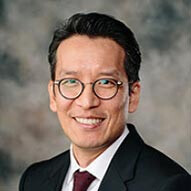Pediatric braces and orthodontic treatments for craniofacial anomalies
For children with craniofacial anomalies that affect the bones of the upper or lower jaws, braces and other orthodontic treatments may be prescribed as part of the treatment to correct the condition. Orthodontics are often needed prior to most surgical procedures associated with craniofacial anomalies. Our orthodontists at Children's Health℠ are specially trained to provide the exact treatments needed for these children.
What are pediatric braces and orthodontic treatments for craniofacial anomalies?
Our orthodontists work with an interdisciplinary team of specialists in treating craniofacial conditions. Our orthodontists are specially trained to provide the exact treatments required by children with congenital or acquired anomalies that result in:
Open-, over-, and under-bites
Misalignment of the upper and lower jaws
Uneven facial development
Genetic conditions that affect the jaw
Your child’s orthodontist will create a plan that meets your child’s specific treatment needs. If your child is experiencing pain or having trouble speaking, chewing, or breathing because of his or her craniofacial condition, we can help.
What can I expect with pediatric braces and orthodontic treatments for craniofacial anomalies?
There are a variety of orthodontic treatments that may be prescribed to treat your child’s craniofacial condition. Your orthodontist will carefully explain the treatments and what your child may expect with those treatments, including how long the treatments will take and any special oral care that your child should take.
Some orthodontic treatments include:
Braces
Braces work by applying continuous pressure over a period of time to slowly move teeth in a specific direction. As the teeth move, the bone changes shape. Braces are made up of:
Brackets – small squares bonded to each tooth made of stainless steel, tooth-colored ceramic, or plastic – which hold the arch wires that move the teeth.
Orthodontic bands made of stainless steel that are cemented to and wrap around the teeth to anchor the brackets.
Arch wires that attach to the brackets and act as tracks to guide the teeth. Ties made of rubber or fine wire that fasten the arch wire to the brackets.
Spacers
Spacers are separators that fit between the teeth to create spaces for the orthodontic bands. They may include:
Springs between brackets to open or close spaces between teeth.
Elastics or rubber bands that attach to the hooks on brackets and apply pressure to move the upper teeth against the lower teeth.
Retainers
Retainers are devices that are custom-made to your child’s mouth, that work to hold teeth in position after surgery or braces. Retainers can include:
A hard plastic piece that is molded to fit in the roof of your child’s mouth.
Wire that helps keep teeth in position.
Expander
An expander is used to widen the upper jaw so that the bottom and upper tooth will fit together better. An expander includes:
A screw that is attached to the teeth with metal bands.
A key, which is used to gently expand the appliance and push the jaw wider apart.
Face mask
Face mask is an orthodontic appliance used to correct underbite by pulling forward and assisting the growth of the upper jaw.
Pediatric braces and orthodontic treatments for craniofacial anomalies doctors and providers
 Yong Jong Park, DDSPediatric Orthodontics Specialist
Yong Jong Park, DDSPediatric Orthodontics Specialist